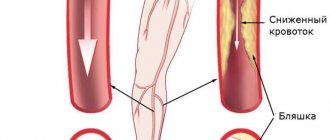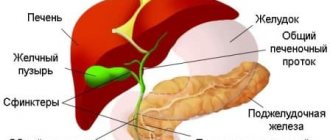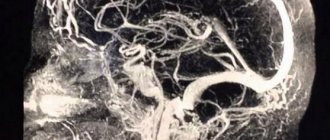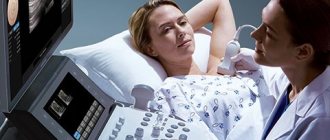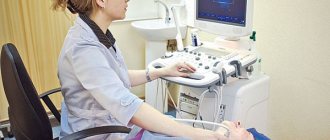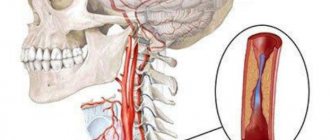Consequences after UAE
Embozene
Despite the fact that uterine artery embolization has been used not so long ago, this non-surgical treatment technique began to be widely used back in 1979. Then it was used to stop bleeding after childbirth and surgery. However, embolization of the uterine arteries for fibroids began to be used only in the early nineties of the last century. Initially, it was used to prepare for myomectomy in order to minimize the risk of bleeding. However, it was soon determined that myomectomy after embolization was no longer required. It was after this that fibroid embolization began to be widely used throughout the world. In the gynecology department of the CELT clinic, uterine fibroid embolization surgery has been performed for decades.
What is "embolization"?
Embolization of uterine fibroids does not require surgery. The desired effect is achieved through the use of an intravascular substrate that can cause blockage of the vessel in myomatous nodes. A catheter is inserted through a puncture in the patient's right thigh, through which the substrate is injected. Within a few hours after the procedure, the arteries of the myomatous node are blocked and it dies. The effectiveness of the operation for embolization of the uterine arteries for uterine fibroids is so high that in a number of cases it allows one to avoid surgical intervention to remove the uterus. This is especially true for young patients who are planning a pregnancy. You can find out the cost of uterine artery embolization in Moscow at the CELT clinic in the corresponding section of our official website.
Results of uterine artery embolization
The first manifestation of the effectiveness of UAE is the normalization of symptoms. Immediately after the intervention, menstrual bleeding is normalized, its volume and duration are reduced. Symptoms of compression also decrease and disappear; this process is somewhat longer and can last several weeks or months. The reduction of myomatous nodes, as well as the overall size of the uterus, most actively occurs during the first 6-8 months after UAE. On average, by the year the volume of nodes decreases by more than 4 times. Small fibroids disappear completely. Strictly speaking, already 2 weeks after UAE there are no fibroids as such left - they are replaced by connective tissue. These scar nodes actively shrink and are unable to cause symptoms or grow back. An important feature of UAE is also the absence of the risk of disease relapse after the intervention. This is due to the fact that with EMA the impact occurs on all nodes, regardless of their size. Currently, there are positive data from long-term follow-up of a large number of patients - more than 98% of women after UAE do not require any additional treatment for uterine fibroids.
The graph shows a decrease in the size of the uterus and fibroids. By the year after UAE, the volume of myomatous nodes is reduced on average by more than 4 times.
We recorded a series of video interviews with patients who underwent embolization. Watch the video story of our patient Irina about the embolization performed.
Features and advantages of uterine artery embolization:
- An extremely safe and minimally invasive treatment method that does not require anesthesia.
- The intervention is highly effective in more than 98.5% of cases (i.e., after UAE there is no need to return to the issue of treating uterine fibroids).
- There is an immediate improvement in symptoms.
- Fibroids do not recur (unlike myomectomy, for which the probability of recurrence reaches 30-40%).
- A very short hospital stay is required, usually 1 day.
- UAE is not an operation, is performed under local anesthesia and takes 15 minutes.
- Extremely low likelihood of any complications. According to comparative studies, the risk of any complications is 20 times lower than for any surgical treatment option for fibroids.
- The uterus is not removed.
- The ability to bear children is preserved.
Indications:
- fibroids up to twenty weeks of pregnancy in size, if there is no damage to the cervix, ovaries and endometrium, including patients who are planning a pregnancy in cases where myomatous nodes cause the inability to conceive and bear a child;
- preparation for myomectomy or hysteroresectoscopy;
- severe uterine bleeding, in which other treatment methods are ineffective or can harm the health and life of the patient.
A major role in deciding whether to perform uterine artery embolization for uterine fibroids is played by the patient’s desire to preserve the uterus and give birth in the future and to exclude surgery.
UAE and pregnancy
If uterine fibroids prevent pregnancy or pregnancy, treatment options include conservative myomectomy or resectoscopy for submucosal fibroids. In the presence of uterine factor infertility caused by uterine fibroids, these techniques invariably show high effectiveness in restoring reproductive function.
In some cases, such operations are impossible or ineffective due to the location of the myomatous nodes, their large size or number. In many cases, there are multiple uterine fibroids, or uterine fibroids with an interstitial (intermuscular) location of the nodes. In such cases, attempts to remove nodes are accompanied by intervention in the uterine cavity and can lead to complications such as cicatricial deformations of the cavity, adhesions, synechiae of the uterine cavity, not only not increasing a woman’s chances of carrying a pregnancy, but also exacerbating them.
In such cases, EMA becomes the method of choice as a gentle and organ-preserving method. After reducing the size and fibrosis of myomatous nodes after embolization, the normal structure of the uterus is restored, the topography of the cervical canal is restored, which improves reproductive prognosis. In the group of patients in whom conservative myomectomy is impossible for technical reasons, or its implementation is associated with a high health risk, embolization is the best option for preserving and restoring reproductive function.
How does EMA work?
Embolization allows you to mechanically occlude the vessel and cause the formation of a blood clot. For fibroids, this procedure is aimed at stopping the flow of blood through those branches of the uterine arteries that feed the fibroid nodes. In this case, the branches that supply healthy myometrium are not affected. Once the blood flow is stopped, the cells that form the fibroids die. It takes several days to replace them with connective tissue, after which it begins to dissolve. The latter leads to a significant reduction, and often the complete disappearance of myomatous nodes. This approach also allows us to eliminate the clinical manifestations of pathology.
Post-embolization period
Despite the fact that UAE is a virtually painless procedure, after 1-2 hours quite severe nagging pain occurs in the lower abdomen. These sensations are a consequence of ischemia of the fibroid cells and reflect the effectiveness of the intervention. The pain lasts for several hours and is adequately relieved with painkillers.
In addition, in the first days after UAE, the temperature may rise (up to 37-37.5). Weakness and a feeling of malaise are also possible. However, all these symptoms, known as post-embolization syndrome, pass quickly, do not pose a threat to health and are in no way related to complications of the intervention.
Advantages of radial access
For the first time in the Russian Federation, UAE was performed at the CELT clinic using radial access, i.e.
through an artery in the hand or forearm. This approach allowed us to reduce the time of surgery, fluoroscopy, and the amount of contrast agent. The operator’s work is also significantly easier, and the patient herself feels much more comfortable. Moreover, according to numerous studies conducted around the world, the radial arm approach is much safer than the femoral artery approach, reducing the risk of complications by more than five times. In our clinic, radial access is performed using original Japanese-made Terumo catheter probes. They are even thinner and smaller than the probes used for femoral artery puncture, making the procedure even less traumatic. After it, the patient does not have to remain in bed. Discharge from the hospital occurs the next day.
History of the method
UAE was first used in the 70s of the 20th century as a method of treating uterine bleeding that occurs after complicated childbirth or after surgery. The French researcher Jacques Ravina was the first to use this technique to treat uterine fibroids. Initially, the technique was intended for preoperative preparation of patients for hysterectomy in order to reduce surgical blood loss. During the observation of women after embolization, the researcher noted that in most patients the manifestations of the disease disappeared or significantly decreased, and a pronounced decrease in the size of the nodes was also noted. Since then, the EMA technique has been actively studied, improved, and spread throughout the world.
How is the procedure performed?
Based on numerous reviews of uterine artery embolization for uterine fibroids, the procedure causes virtually no pain, which allows it to be performed under local anesthesia. During UAE, the patient may feel warmth or a slight burning sensation in the lower back and lower abdomen under the influence of the contrast agent necessary to visualize the blood vessels. The drug used for embolization is safe and biologically inert, and therefore will not cause an allergic reaction. For embolization, its amount is minimal and is up to 500 mg. The procedure itself is performed in a specially equipped operating room, which has an angiographic machine, by an endovascular surgeon with the appropriate qualifications. It involves puncturing the skin in the upper right thigh and inserting a special catheter into the artery, which a specialist carefully guides into the uterine artery. Accuracy is achieved through X-ray control. Microparticles of the embolization drug are injected through the catheter. The duration of the procedure ranges from ten minutes to two and a half hours, depending on the clinical case and the experience of the specialist. On average, it lasts about twenty minutes.
Preparation for the UAE procedure
Before the procedure, the uterus is imaged using magnetic resonance imaging (MRI) or ultrasound to confirm the presence of a fibroid tumor (fibroid) that is causing discomfort and to assess the size, number, and location in the uterine wall.
Uterine fibroids can also be detected during laparoscopy.
If a woman experiences heavy bleeding between periods, a biopsy of the endometrium (the lining of the uterus) may be recommended to rule out cancer.
Before starting the UAE procedure, you must inform your doctor:
- all medications you take, including herbal and nutritional supplements;
- about the presence of allergies, especially to drugs used for local and general anesthesia or to a contrast agent (containing iodine);
- about recent illnesses or other important medical facts relating to health;
- pregnancy.
If UAE is necessary during pregnancy, we will take every precaution to minimize radiation exposure to the baby.
On the eve of the examination, it is necessary to shave the groin area. It is recommended not to eat or drink at night.
EMA in CELT
Embolization of uterine fibroids in CELT is performed:
- absolutely painless and safe with the use of effective anesthetics by experienced specialists;
- effectively, with the use of modern embolic agents, which make it possible to stop blood flow only in the vessels feeding the fibroid;
- low-traumatic, using modern techniques and equipment.
For embolization, our clinic uses clinically proven products from the world's most famous manufacturers:
- "Bearing nsPVA" from (USA);
- "Bead Block" from (Japan);
- "Contour" from (USA).
- Embozene (Embozin) Microspheres from the manufacturer Celonova (USA).
After UAE in our clinic, the patient retains the ability to conceive and give birth to a healthy child!
Possible complications:
Any procedure that involves placing a catheter inside a blood vessel carries certain risks. These risks include blood vessel damage, bruising or bleeding at the puncture site, and/or infection. In our clinic, the UAE procedure is performed only by an experienced x-ray surgeon, and the probability of developing all possible complications (including hematomas) is less than one percent. Any surgical procedure that compromises the integrity of the skin carries the risk of bacterial infection. The chance of an infection requiring antibiotic treatment occurs in less than one in 1,000 cases. There is a possibility of air embolization of some arteries, which is accompanied by disruption of the normal supply of oxygen to tissues and organs.
Sometimes an allergic reaction to the contrast agent, x-ray radiation or emboli used for UAE occurs. This can range from mild itching to severe reactions that can affect a woman's breathing or blood pressure. A woman undergoing UAE is closely monitored by medical personnel during the procedure so that an allergic reaction can be immediately detected and prevented.
About 2-3% of women may notice small pieces of fibrous tissue after some time after the UAE procedure. This occurs when fibroids are located inside the uterine cavity and can fragment after embolization. Women with this problem may need a procedure called D&C (dilation and curettage) to make sure all materials are removed and to prevent bleeding or infection. The vast majority of women who undergo UAE resume normal menstrual cycles after the procedure. However, approximately 1-5% of women undergo menopause after UAE. This occurs more often in women over 45 years of age. However, in younger patients, there is a tendency for new fibroids to develop or symptoms to return.
An important issue has continued to be discussed for many years about the effect of the UAE procedure on the possibility of developing pregnancy. Currently there is no consensus on this issue. In most cases, women did not have any problems during pregnancy and childbirth after the UAE procedure. Because of this uncertainty, doctors sometimes recommend that women who want to have more children undergo surgery to remove individual tumors rather than use UAE. If this is not possible, then UAE will be the best treatment option.
It is not possible to predict whether the walls of the uterus will be weakened after UAE and whether this will create a problem during labor.
Currently, it is recommended to use any method of contraception for six months after the UAE procedure and give birth by caesarean section.
Necrosis of the uterus
Modern medicine excludes such a phenomenon as uterine necrosis after UAE. Similar cases occurred in the late nineties, when the procedure was performed using emboli of the wrong diameter or characteristics that were not suitable for the case. A negative role was played by incorrect preparation of patients, as well as an incorrect understanding of the symptoms of the birth of myomatous neoplasms. But even so, such cases were extremely rare. Today they are completely absent.
Fertility
Embolization does not deprive women of their ability to bear children. Obviously, after a hysterectomy there is no talk of childbearing, but even after a myomectomy, infertility often occurs due to the formation of adhesions in and around the uterus.
Many women around the world give birth to healthy children after UAE. We also have good fertility results. In our country, more than a dozen babies have been born, including thanks to EMA. It is important to note that the majority of patients who were allowed to have children by UAE did not have any prospects for organ-preserving treatment - in most clinics they were only recommended to have the uterus removed.
Conflict of interest
Let's look at “conflicts of interest” in more detail. Who speaks out most actively against uterine artery embolization?
Some doctors at antenatal clinics or medical centers
As a rule, these are “gynecologist-therapists,” that is, doctors who provide only outpatient visits. Here is a list of remedies they can use for uterine fibroids:
- to diagnose,
- take tests
- assign observation,
- use hormonal drugs,
- insert the Mirena intrauterine device,
- prescribe dietary supplements for the treatment of uterine fibroids - “Indinol”, “Epigallate”.
and ultimately recommend surgical treatment, since in the vast majority of cases all of the above remedies will not be effective and the myomatous nodes will continue to grow.
The surgical method of treatment is perceived as the only possible one, since it is this method that is regulated by all regulations on the basis of which work is carried out in outpatient gynecological care. Such indications for UAE are most often perceived as unnecessary and not worthy of attention. That is, despite the fact that embolization of the uterine arteries is approved by the Ministry of Health in regulatory documents, it is presented with the sauce “at the strong request of the patient.”
In addition, we must remember that all patients with uterine fibroids are placed on “dispensary registration” - a rather bureaucratic procedure. According to it, after the disease is first diagnosed, the patient is registered in a special file, and subsequently she must be regularly called for appointments and the course of the disease assessed. It is possible to be removed from the dispensary register only if the disease is completely cured, and according to the “concepts” of the Ministry of Health, complete recovery from uterine fibroids occurs only after removal of the uterus. No matter how cynical it may sound, the balance between registered and deregistered patients with uterine fibroids must be maintained at a relatively constant level, so the outpatient doctor is “interested” in ensuring that patients are not only constantly registered, but also deregistered accounting. The only option is to send for a hysterectomy (removal of the uterus), fortunately, there are “ancient” indications for this, which are still a guide to action for some doctors: enlargement of the uterus up to 12 weeks or more, heavy menstruation leading to anemia, rapid growth, pain, compression of neighboring organs and other symptoms of uterine fibroids that often accompany this disease.
Size of uterine fibroids in weeks
The most subjective indication for hysterectomy is the size of the uterine fibroids, which is determined during an examination on a chair - there is actually a lot of room for “creativity”. It seemed to the doctor that the fibroids had already been there for more than 12 weeks - and that’s it, we could send him for surgery. And you can’t argue that the doctor assessed it that way... After all, there are no clear mathematical criteria.
It is necessary to explain how the size of the uterus is assessed in weeks. It is obvious that normally the uterus increases in size only during pregnancy and this happens evenly, that is, both in length and width, while the proportions and shape are maintained. In this case, assessing the size of the uterus is not difficult. The development of uterine fibroids also increases the overall size of the uterus, but unevenly - nodes can grow in all directions from any wall; for example, the length of the uterus is slightly larger than normal, and a large node comes from the back wall, and there is a node along the left rib. To assess the correspondence of such a uterus to the weeks of pregnancy, one must show “creative abilities” - how to put these nodes with the uterus together and imagine what stage of the pregnant uterus this corresponds to, and all this must be done by palpating (feeling) this uterus through the anterior abdominal wall , which may contain excess adipose tissue, falsely increasing the size of the uterus. Appreciate the scope for creativity...
And this is not an exception, but rather the rule: every day we have to see patients who come in with an oversized uterus. Sometimes you are simply amazed: it says “uterine fibroids 16-17 weeks”, but in fact the uterus does not even reach 10 weeks...
So, removal of the uterus or removal of fibroid nodes allows the patient to be removed from the dispensary register - and this is one of the reasons for choosing a surgical approach to the treatment of this disease.
Important! Carrying out embolization of the uterine arteries does not remove the patient from this registration (well, there is simply no such line in the order of the Ministry of Health yet), although in essence, after embolization of the uterine arteries, the disease “uterine fibroids” ends, since the nodes cease to be fibroids, and all the beginnings of the growth of new nodes die .
Thus, the patient remains on “balance”; in addition, the lack of knowledge about what actually happens after UAE makes gynecologists very “worry” and tense, saying: “I don’t know what they did to you here, and I also don’t know what to do with you next; So go to where you had this EMA done and see them.” Fortunately, we manage all our patients after UAE ourselves, and they do not have to hear this phrase. Well, only if they accidentally wander into a antenatal clinic.
Further. Uterine artery embolization cannot but irritate gynecologists in primary care, since its existence violates “corporate interests.”
In medicine, more than anywhere else, corporate interests are probably very strong. Diseases and patients are “divided” between medical specialties, and no one claims to be “other people’s” diseases and, accordingly, “other people’s” patients. Uterine fibroids are the main gynecological pathology, with which, in general, everything has always been clear: outpatient observation, attempts at therapeutic treatment, surgical treatment (removal of nodes, removal of the uterus), observation after surgery - everything is known, understood and worked out for decades. The patient always remained only with gynecologists. The emergence of UAE has created a serious problem: single gynecologists deal with this problem, and the operation itself is generally performed by a surgeon - a representative of another specialty, that is, gynecologists have to “voluntarily give” their patients to another “corporation” and, in fact, not get them back, since the patients, as a rule, they are subsequently observed by those gynecologists who deal with this problem. Considering what a huge proportion of patients are patients with uterine fibroids, it is impossible to imagine that the “attraction of unprecedented generosity” will begin to work everywhere.
Interestingly, a solution to the problem is still partly possible. We have repeatedly approached outpatient doctors with a proposal to train them in the management of patients after UAE, organized seminars for doctors, offered all types of cooperation - there is no effect, 5-7 doctors come to the seminars, and even those who have been working in this field for a long time and bring similar patients with us. As a result, patients coming from all over Russia tell us the same statements from doctors about embolization of the uterine arteries:
- “It’s better to cut off your uterus right away than to do this embolization”;
- “I don’t recommend doing UAE, I had three patients after this operation - how much they suffered, they then had their uterus removed anyway”;
- “This EMA has not been fully studied, it is experimental - it is not worth the risk”;
- “They will block your blood vessels, and your uterus will rot”;
- “You can try, but in a year all the nodes will grow again, this is all temporary”;
- “No one knows the long-term results - it’s better not to take risks”
and stuff like that...
This only proves once again that such statements can be the result of ignorance, emotions, but not a scientifically based conclusion. There is even a separate section on the Mioma.ru forum where we collect “masterpieces” of ignorance or cynical misleading of patients. However, I would very much like this “collection” to be of only historical interest and not be replenished with new fabrications.
In general, at first glance, all this may seem wild and far-fetched, but this is actually true. You can draw your own conclusion in the process of communicating with doctors who will “scare” you about this procedure. Just pay attention to the style of speech, the arguments, the number of patients that the doctor saw after this procedure (most often we are talking about 2-3 patients for whom everything was bad - here it should be noted that clinics that seriously deal with UAE, as a rule, they manage their patients themselves, and if the situation after UAE is ambiguous, even more so). If the doctor is categorical, emotional, does not use scientifically based data, and his story is more like philistine gossip, perhaps you should think about the doctor’s competence in this matter. It is always worth asking: if this procedure is so bad, ineffective, dangerous and experimental, why was this procedure chosen as a treatment for uterine fibroids by the US Secretary of State back in 2004 (this is official information, see here)? It seems like it’s not customary to experiment on such people...
“Birth” of a myomatous node
“Birth” (or expulsion) of a myomatous neoplasm can occur several days, several months, and even a year after the procedure. This prognosis becomes known to the patient even before the procedure, during an ultrasound diagnostic examination. For a myomatous node with a diameter of 3 to 5 cm, a visit to a doctor is not required, but if the diameter is larger, then the consultation can be carried out remotely. Most often, the node comes out on its own; medical attention is extremely rarely required. It is worth noting that the process of “birth” of a node is a controlled condition, after which the patient is completely freed from it. It is not a complication and is considered by modern gynecologists as a favorable outcome of UAE.



